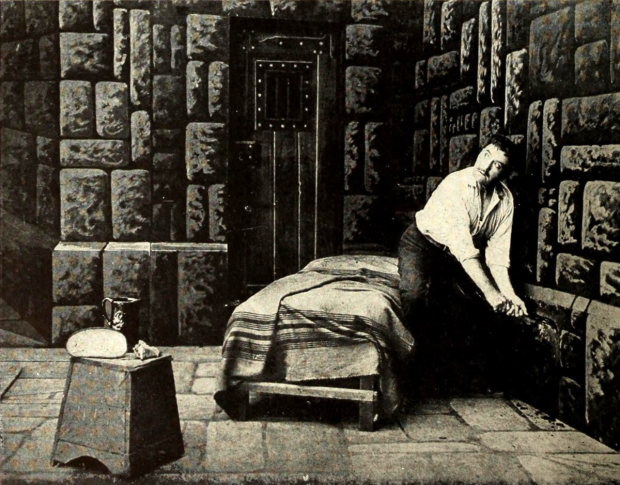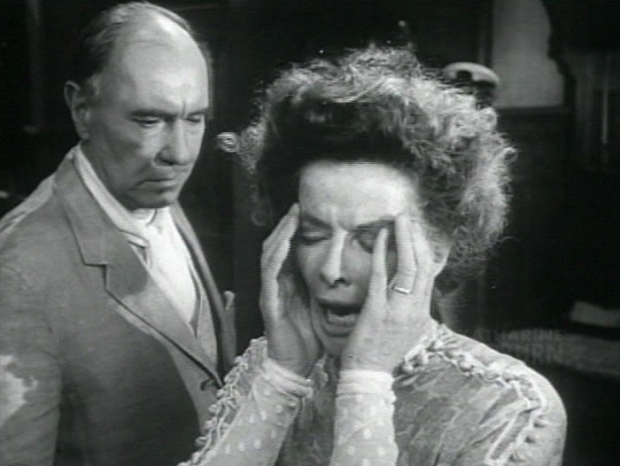Notes on O'Neill's Ghosts
”Long Day’s Journey Into Night” haunts America for so many reasons.

(© Joan Marcus)
Long Day's Journey Into Night. Though I know and love hundreds of American plays, I sometimes start to think that this is the only American play. It invariably startles me when I encounter people who have never experienced it — on the page, on the stage, in Sidney Lumet's 1962 film, or in one of several televised versions. My surprise isn't a matter of cultural literacy; it occurs because Long Day's Journey seems to belong to us all. I would view that feeling as peculiarly American, except that I know how deeply people in Britain, Ireland, and Scandinavia, especially Sweden, share it. The world premiere took place in Stockholm, and I have heard Swedish theater people refer to Long Day's Journey as "their" O'Neill play.
One Swedish playwright, Lars Norén, became so fixated on Long Day's Journey that he wrote an entire trilogy of plays modeled on it. The last of them, And Give Us the Shadows (1991), actually recapitulates the situation of O'Neill's play a generation later, showing O'Neill himself, frail and aging, stewing in his tormented marriage to Carlotta, and plagued by an unexpected, unwelcome 61st-birthday visit from his two troubled sons, Eugene Jr. and Shane, both of whom would later die tragically.
Yes, the cycle of O'Neill's family unhappiness repeated itself. The one apparent escapee was his daughter, Oona. In Norén's play, when her name is mentioned, O'Neill angrily shuts down the topic. Which is true: After Oona, just turning 18, met and shortly married Charlie Chaplin — a man her father's age, whose predilection for much younger women had been a repeated source of tabloid scandal — O'Neill refused to communicate with her and rarely mentioned her again. Oona and Chaplin produced a legion of children and stayed married, with apparent contentment, until his death 34 years later, in 1977. She had both the luck and the determination that it took to escape the O'Neill family nightmare.

Oona's escape suggests the relief we all feel at the end of Long Day's Journey. The play's "four haunted Tyrones," as O'Neill called them, will go on tormenting each other in perpetuity within the play's metaphoric space, but we have survived it, and are free. We can go home to deal with our own familial agonies — which, we can tell ourselves, are not nearly so bad. The instinct to compare reinforces the extent to which the play is embedded in us. No, we think, this is not my family; no such sorrows warped my childhood. And yet the Tyrones are, recognizably, the American family: mom, dad, and the two kids, sticking together and loving each other "in spite of everything." Far from them as we are, we know that feeling.
O'Neill kills himself in this play. (He memorialized his actual attempt to do so in his other late masterpiece, 1946's The Iceman Cometh.) In real life, James and Mary Ellen (called "Ella") O'Neill had a child named Edmund who died; the Tyrones have an Edmund but have lost, in infancy, a Eugene. Other parts of the story ended more happily in real life: Ella O'Neill was cured of her addiction in 1914; when James died in 1920, she managed his estate quite capably until her own death two years later. O'Neill's own tuberculosis ("consumption") also was quickly cured — once he and a consulting physician had argued his father into removing him from a grim state-run sanatorium and shelling out for a better-class private hospital. (In the play, James Tyrone agrees to the latter and spares his ailing son the former.) At the Gaylord Sanitarium, O'Neill finally had the respite to focus on his vocation as a writer. One of his early plays, The Straw — one of the least often revived of his major works — draws on his experiences there.

While O'Neill battled TB, his father, then in his mid-60s, was continuing to act — mostly playing the lead in what his fictional avatar James Tyrone calls "that god-damned play," the actor Charles Fechter's adaptation of Alexandre Dumas' novel The Count of Monte Cristo. James O'Neill had by then been touring America in it, on and off, for 40 years. Audiences apparently never got tired of watching him, as the unjustly imprisoned Edmond Dantes, get his revenge on the three villains — one destroyed with each act's final curtain — who had had him arrested, on his wedding day, on a false charge of treason. He starred in a silent film version for Adolph Zukor in 1913, while Eugene was recuperating in Gaylord Sanitarium. Perhaps James' presumably fat star salary paid for his son's hospitalization, as well as for Ella's drug rehab. (Edwin S. Porter, already celebrated in cinema for his seminal 1903 work, The Great Train Robbery, codirected the film.)
Audiences of Long Day's Journey tend, understandably, to mistrust James Tyrone's claim that he struggled to replace Monte Cristo with something artistically better, but the record clearly shows James O'Neill striving to do so, at least for the last 20 years of his life. He tried honoring his source author by playing d'Artagnan in an adaptation of Dumas' Three Musketeers; he tried bringing back the touring-star vehicles of his boyhood, like Virginius and The Two Orphans. In his last decade, he tried new plays, modest successes that paid their way for a few months but caused no storms at the box office. When money ran short, it was time to tour Monte Cristo again. According to IBDB.com, he made no New York appearances between 1877 and 1899 — the formative years of both of his sons. Monte Cristo paid the bills. No wonder he named his summer home — the grim house on Pequot Avenue in New London, Connecticut, where Long Day's Journey is set — "Monte Cristo Cottage."
Having arrived at New London, I'll talk next week about some of the lore, ghostly and otherwise, behind the cottage itself (now a National Historic Landmark) and the Eugene O'Neill Theater Center, which owns it. Real O'Neill memories haunt both places.
To read Part II of this "Thinking About Theater" column, click here.
Michael Feingold has twice won the George Jean Nathan Award for Dramatic Criticism, most recently in 2015 for his "Thinking About Theater" columns on TheaterMania, and has twice been a finalist for the Pulitzer Prize in Criticism. He serves as chairman of the Obie Awards and has also worked as a playwright, translator, and dramaturg.










